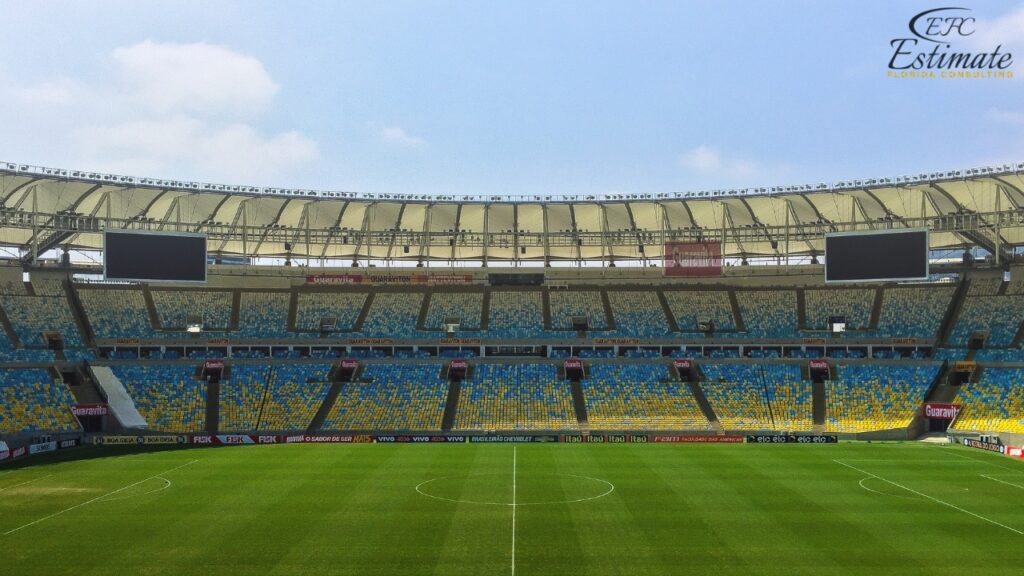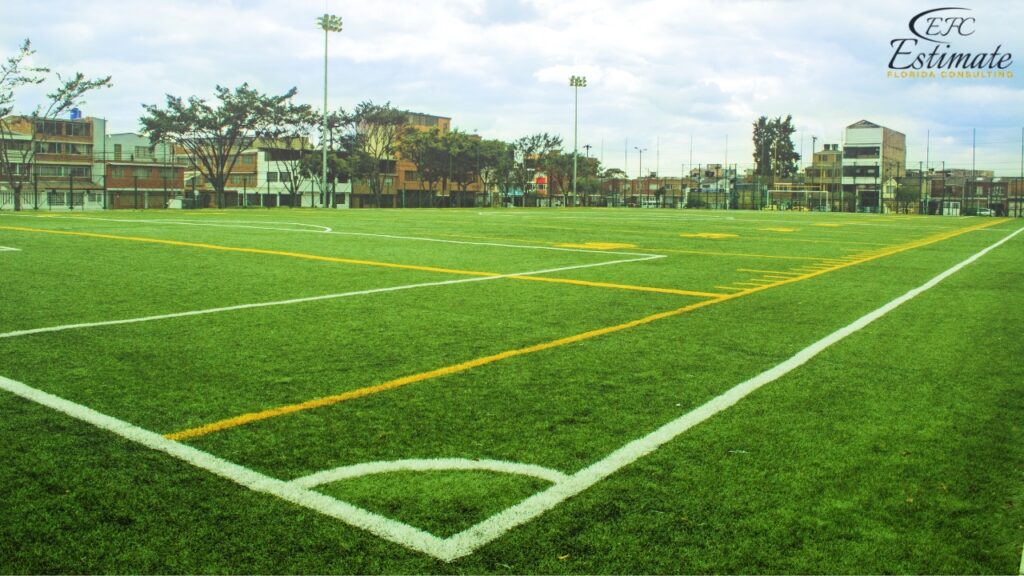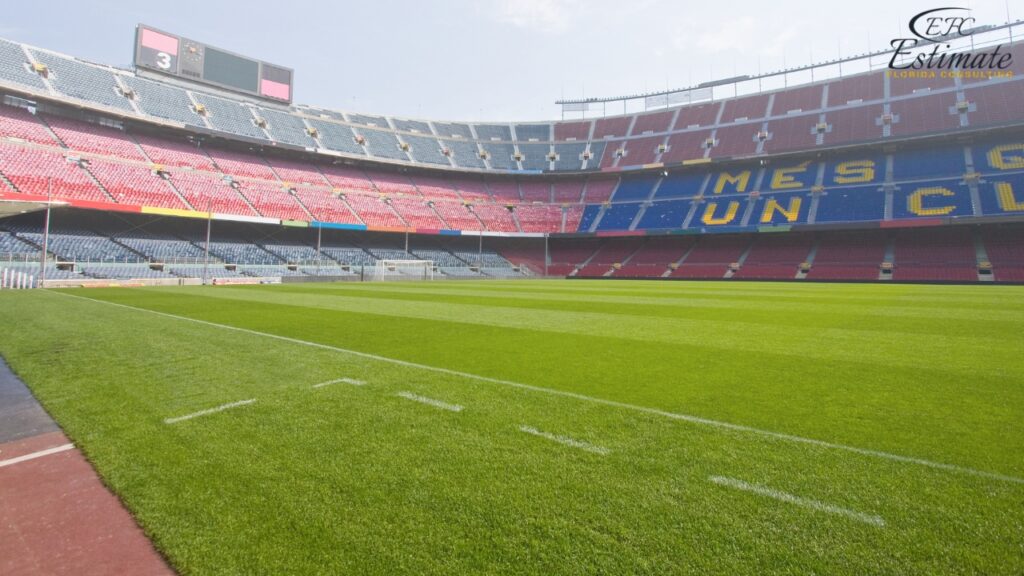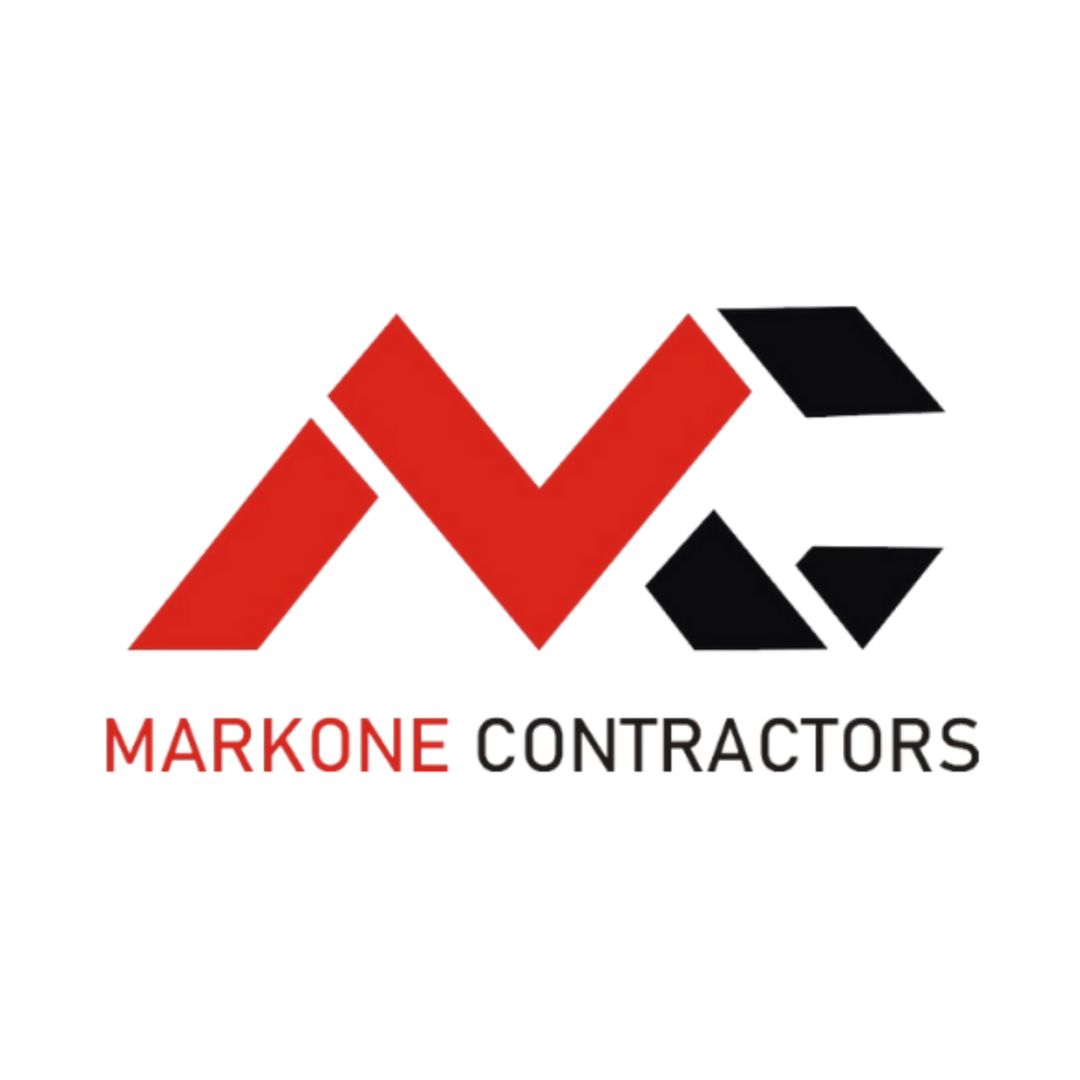How Much Does It Cost To Build a Soccer Stadium?
Soccer stadiums are more than mere venues; they are cultural landmarks that embody the passion and unity of communities worldwide. From hosting exhilarating matches to fostering lifelong memories, these stadiums play a pivotal role in the global sports landscape. However, the process of constructing a soccer stadium involves intricate planning and substantial financial investments to ensure its functionality, safety, and enduring appeal.
Factors Influencing Costs

Location and Land Acquisition
The location of a soccer stadium is a primary cost determinant, influencing land acquisition expenses and overall project feasibility. Urban stadiums, strategically positioned near transportation hubs and city centers, often incur higher land costs due to limited availability and competitive demand. For instance, acquiring land in densely populated areas like New York City or London can escalate costs significantly, ranging from $300 million to $500 million, depending on proximity to urban amenities and accessibility.
Stadium Size and Capacity
The size and seating capacity of a soccer stadium directly correlate with construction costs, as larger facilities necessitate more extensive structural frameworks, seating installations, and amenities. Constructing a standard 50,000-seat stadium typically requires an investment ranging from $1.5 billion to $2 billion, excluding land acquisition expenses. Variations in size, such as stadiums accommodating over 80,000 spectators like the Camp Nou in Barcelona, can escalate costs beyond $2.5 billion, reflecting increased construction complexity and spatial requirements.
Infrastructure and Utilities
Ensuring robust infrastructure and utilities is essential for optimizing stadium functionality and enhancing spectator experiences. Costs associated with electricity, water supply, sanitation systems, and telecommunications infrastructure vary based on project scope and geographic location. Incorporating sustainable solutions such as solar panels, rainwater harvesting systems, and energy-efficient technologies during construction may initially inflate costs but yield long-term operational savings and environmental benefits.
Design and Architecture
Architectural Style and Complexity
The architectural design of a soccer stadium significantly impacts construction expenditures, with modern venues often featuring innovative designs and iconic features. Complexities such as distinctive roof structures, state-of-the-art lighting systems, and interactive fan zones contribute to higher construction costs. For example, stadiums renowned for their architectural prowess, such as the Allianz Arena in Munich and the Mercedes-Benz Stadium in Atlanta, may exceed $2 billion in development costs due to advanced design elements and technological integration.

Special Features and Amenities
Integrating premium amenities and special features enhances the stadium’s appeal and revenue-generating potential but requires substantial financial investment. Luxury suites, hospitality lounges, VIP seating areas, and upscale dining options cater to affluent patrons seeking exclusive experiences during events. The incorporation of these amenities can add tens of millions of dollars to the construction budget, reflecting demand for enhanced comfort, convenience, and entertainment options among diverse spectator demographics.
Sustainability Considerations
Embedding sustainability principles into stadium design mitigates environmental impact and operational costs over its lifecycle. Utilizing eco-friendly building materials, energy-efficient systems, and renewable energy sources aligns with global sustainability goals while enhancing operational efficiency. Although initial investments in green technologies may elevate construction expenses, benefits such as reduced energy consumption, lower maintenance costs, and positive community perception justify these upfront expenditures.
Construction Materials
Types of Materials Used
The selection of construction materials significantly influences stadium construction costs, durability, and aesthetic appeal. Common materials include reinforced concrete, structural steel, aluminum, and composite materials, each with distinct cost implications based on availability, transportation logistics, and installation complexity. Opting for high-performance materials such as precast concrete panels or advanced steel alloys enhances structural integrity and longevity but may require higher initial investments to ensure quality and compliance with safety standards.
Cost Implications of Materials
Material costs constitute a substantial portion of stadium construction budgets and are subject to market fluctuations and economic conditions. Variations in steel, concrete, and glass prices impact project expenses, necessitating proactive procurement strategies and supplier negotiations. Collaborating with reputable contractors, leveraging bulk purchasing agreements, and adhering to stringent quality control measures mitigate material cost risks and ensure adherence to budgetary constraints throughout the construction phase.
Labor Costs
Skilled vs. Unskilled Labor
Labor costs represent a significant component of stadium construction expenditures, influenced by workforce availability, skill levels, and union regulations. Skilled labor, encompassing architects, engineers, and specialized tradespeople, commands higher wages due to technical expertise and project requirements. In contrast, unskilled labor, including construction workers and general laborers, contributes to day-to-day construction activities at comparatively lower wage rates. Effective labor management, compliance with union agreements, and prioritization of workplace safety protocols are essential for controlling labor-related costs and maintaining project timelines.
Union Regulations and Wages
Navigating union regulations and wage agreements is crucial for managing labor costs and ensuring compliance with labor laws. Unionized construction projects typically incur higher labor expenses but benefit from standardized work practices, safety protocols, and dispute resolution mechanisms. Negotiating equitable labor agreements, optimizing workforce productivity, and fostering collaborative labor-management relationships are essential for minimizing labor cost escalations and enhancing construction efficiency.
Legal and Regulatory Requirements
Permits and Licenses
Securing permits and licenses is essential for initiating stadium construction and complying with regulatory standards. Costs associated with zoning approvals, environmental assessments, building permits, and safety certifications vary based on project complexity and local jurisdictional requirements. Legal fees for consulting with regulatory experts, preparing documentation, and navigating approval processes should be factored into the overall construction budget to mitigate delays and regulatory compliance challenges.
Compliance with Safety Standards
Adhering to stringent safety standards is paramount in stadium construction to protect workers, spectators, and surrounding communities. Costs for implementing safety measures such as structural reinforcements, emergency exit systems, and fire suppression technologies can exceed $10 million for large-scale projects. Conducting regular safety inspections, providing comprehensive safety training, and investing in protective equipment are essential for minimizing construction risks and ensuring compliance with occupational health and safety regulations throughout the construction lifecycle.

Technology and Innovation
Use of Technology in Construction
Embracing advanced construction technologies enhances productivity, accuracy, and cost-effectiveness throughout the stadium development process. Techniques such as Building Information Modeling (BIM), automated construction equipment, and prefabricated modular systems streamline project workflows and accelerate construction timelines. Adopting digital tools for project management, material tracking, and quality assurance optimizes resource allocation and enhances project transparency, facilitating effective decision-making and mitigating construction-related risks.
Innovations in Stadium Design
Technological innovations continue to revolutionize stadium design, offering enhanced functionality and immersive fan experiences. Features such as automated retractable roofs, high-definition video displays, interactive seating arrangements, and Wi-Fi connectivity elevate construction costs but differentiate stadiums as modern entertainment venues. Integrating smart technologies for crowd management, security surveillance, and environmental control systems enhances operational efficiency and enriches spectator engagement, positioning stadiums at the forefront of technological innovation and sustainability.
Get 5 New Leads Next 7Days With Our System
- Multi-Family Building
- Hotel Building
- Hospital Building
- Warehouse Building
- High-Rise Building
- Shopping Complex
Construction Process
Phases of Construction
The construction of a soccer stadium typically follows sequential phases, including site preparation, foundation construction, structural erection, enclosure installation, interior finishing, and site landscaping. Each phase involves specialized contractors, subcontractors, and construction crews working collaboratively to meet project milestones and ensure quality standards. Effective project scheduling, resource allocation, and contingency planning are essential for managing construction timelines, minimizing disruptions, and achieving timely project completion.
Challenges and Considerations
Navigating logistical challenges, weather constraints, supply chain disruptions, and unforeseen construction delays are inherent risks in stadium development projects. Proactively addressing these challenges through comprehensive risk management strategies, contingency planning, and stakeholder communication mitigates project uncertainties and enhances construction resilience. Collaborating with experienced construction teams, monitoring project progress diligently, and adapting strategies to evolving circumstances ensure operational continuity and successful project outcomes amidst dynamic construction environments.
Project Management
Role of Project Managers
Effective project management is indispensable for orchestrating stadium construction from inception to completion. Project managers oversee multidisciplinary teams, coordinate project activities, and ensure adherence to timelines, budgets, and quality standards. Their leadership, decision-making skills, and stakeholder engagement capabilities are pivotal in navigating project complexities, resolving issues promptly, and optimizing resource utilization throughout the construction lifecycle.

Budgeting and Cost Control
Strategic budgeting and rigorous cost control measures are critical for managing stadium construction expenses and mitigating financial risks. Establishing a comprehensive budget encompassing design, procurement, construction, and post-construction phases facilitates proactive cost management. Conducting periodic budget reviews, analyzing cost variances, and implementing contingency plans safeguard against budget overruns and enhance project feasibility. Negotiating competitive bids, leveraging economies of scale, and fostering collaborative partnerships with suppliers and subcontractors optimize cost efficiencies and promote financial sustainability.
Marketing and Branding
Sponsorships and Partnerships
Securing sponsorships and forming strategic partnerships is integral to financing stadium construction and sustaining operational viability. Corporate sponsors often invest in naming rights, advertising placements, and exclusive hospitality packages, generating substantial revenue streams. Collaborating with local businesses, community organizations, and sports franchises diversifies funding sources and mitigates financial risks associated with construction and ongoing maintenance costs.
Revenue Generation Strategies
Diversifying revenue streams is essential for ensuring the long-term financial success of soccer stadiums beyond construction. Revenue sources such as ticket sales, season passes, merchandise sales, food and beverage concessions, and venue rentals contribute to operational revenues. Implementing dynamic pricing strategies, loyalty programs, and fan engagement initiatives maximizes revenue potential while fostering fan loyalty and enhancing overall spectator experiences.
Maintenance and Operations
Long-term Maintenance Costs
Planning for ongoing maintenance and facility management is crucial for preserving stadium functionality and extending its operational lifespan. Routine maintenance activities, including repairs, upgrades, and refurbishments, incur recurring costs that should be budgeted and prioritized. Adopting proactive maintenance practices, investing in durable materials, and leveraging predictive maintenance technologies minimize lifecycle expenses and ensure optimal performance and safety standards throughout the stadium’s operational tenure.
Operational Expenses
Daily operational expenses encompass staffing, utilities, security, and event management services necessary for supporting stadium operations. Personnel costs include salaries for administrative staff, maintenance crews, security personnel, and hospitality service providers. Utilities such as electricity, water, heating, and cooling systems represent ongoing operational costs that must be managed efficiently to optimize cost-effectiveness and environmental sustainability. Implementing robust revenue management strategies and cost containment measures are essential for aligning operational expenditures with revenue generation initiatives, ensuring financial stability and long-term profitability.
Challenges in Building Soccer Stadiums
Environmental Impacts
Addressing environmental considerations is increasingly critical in stadium construction to minimize ecological footprint and mitigate environmental impacts. Factors such as land use, water management, energy consumption, and waste generation require sustainable solutions and regulatory compliance. Implementing green building practices, renewable energy sources, and eco-friendly materials not only reduces environmental impact but also enhances stadium efficiency and operational sustainability over its lifecycle.
Community Relations
Navigating community relations presents significant challenges in stadium construction projects due to potential conflicts over land use, noise pollution, traffic congestion, and urban development impacts. Engaging stakeholders through public consultations, community outreach programs, and transparent communication builds trust, resolves concerns, and fosters positive relationships. Implementing social responsibility initiatives and economic development projects can generate community support and enhance the stadium’s social license to operate, ensuring mutual benefits for all stakeholders involved.
Future Trends
Predictions for Stadium Costs
Forecasting future trends in soccer stadium construction involves anticipating advancements in technology, materials science, sustainability practices, and regulatory frameworks. Innovations such as 3D printing, modular construction, and smart infrastructure solutions promise cost efficiencies, accelerated project timelines, and enhanced stadium performance. Embracing digital transformation and adopting agile methodologies enable stakeholders to adapt to evolving market demands, regulatory requirements, and fan expectations while optimizing construction costs and operational effectiveness.

Technological Advancements
Embracing technological advancements drives continuous innovation in stadium design, construction, and management. Emerging technologies such as virtual reality (VR), augmented reality (AR), and artificial intelligence (AI) revolutionize fan engagement, immersive experiences, and operational efficiencies. Integrating IoT (Internet of Things) devices, sensor networks, and data analytics platforms enhances predictive maintenance, crowd management, and personalized fan services, creating value-added opportunities for stakeholders and enhancing the overall stadium experience.
How much do stadium seats cost?
Depending on a variety of elements and the scope of work description, our stadium goods and seating solutions can range from far under $100 per seat to $500 to $1,000 per seat or more. The majority of our business is between $100 and $500 per seat. We also sell luxury boxes that can cost up to $250,000.
The price of stadium seats varies depending on the type of venue and the location within the stadium. Some factors that may affect seat prices include the quality of materials used for the construction of the seats, how long the company has been in business, and whether the company is a national brand name. In addition, primary schools tend to be cheaper than college stadiums because there are fewer requirements for school stadiums.
How much does it cost to build a 10000 seat stadium?
The price of stadium seats varies depending on the type of venue and the location within the stadium. For a small piece of land, the plan costs tens of thousands of dollars. A larger venue, more facilities for players and spectators will cost more. For the construction of community football stadiums, the total price of a venue is difficult to estimate. It ranges from 100,000 to 1 million US dollars.
In total, the complex would cost between $90 million and $100 million.
Download Template For Soccer Stadium Project Breakdown
- Materials list updated to the zip code
- Fast delivery
- Data base of general contractors and sub-contractors
- Local estimators

Conclusion
The cost of building a soccer stadium is influenced by a myriad of factors, including location, size, design complexity, materials used, labor costs, and regulatory requirements. Successful stadium development requires meticulous planning, strategic decision-making, and collaborative stakeholder engagement to optimize costs, ensure regulatory compliance, and deliver a sustainable and iconic venue that enriches the sporting and cultural fabric of its community.
FAQs
The average cost of building a soccer stadium ranges from $1 billion to $2 billion, depending on size, location, and design complexity.
Construction timelines typically range from 2 to 3 years, accounting for site preparation, structural construction, and finishing.
Yes, cost-saving strategies include efficient design practices, value engineering, sustainable construction methods, and strategic procurement.
Funding sources often include private investors, government subsidies, corporate sponsorships, stadium naming rights deals, and public-private partnerships.
Economic benefits include job creation, tourism revenue generation, increased local business activity, enhanced property values, and community revitalization.
Google Reviews



Process To Get Build a Soccer Stadium Estimate Report
Here I am going to share some steps to get build a soccer stadium estimate report.
-
You need to send your plan to us.
You can send us your plan on info@estimatorflorida.com
-
You receive a quote for your project.
Before starting your project, we send you a quote for your service. That quote will have detailed information about your project. Here you will get information about the size, difficulty, complexity and bid date when determining pricing.
-
Get Estimate Report
Our team will takeoff and estimate your project. When we deliver you’ll receive a PDF and an Excel file of your estimate. We can also offer construction lead generation services for the jobs you’d like to pursue further.

